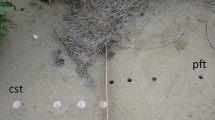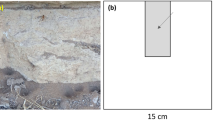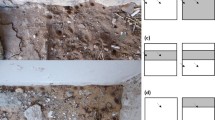There is a large body of evidence indicating that predator behavior may strongly influence patterns and processes at the population and community level. Site selection is a major component of fitness in sit-and-wait predators, especially when relocation is rare. Although several review articles dealt with these issues in web-building spiders, this is the first attempt to summarize the effects of biotic and abiotic factors on site selection and relocation in another group of sit-and-wait predators, the pit-building antlions (Neuroptera: Myrmeleontidae). Our synthesis shows that prey abundance may have relatively little effect on pit relocation and that physical properties of the habitat or competition often override its effect. We suggest that owing to a variety of constraints such as physiological constraints or difficulties in assessing site quality, site selection and relocation are not necessarily optimal and thus food intake rate is not maximized. We call for a multi-factorial study on a single species in order to pinpoint the dominant factors and to assess to what extent they influence site selection and relocation. We conclude by proposing new research directions, such as studying whether pit relocation is an adaptive response, when controlling for possible phylogenetic effects.
Similar content being viewed by others
REFERENCES
Allen, G. R., and Croft, D. B. (1985). Soil particle size and the pit morphology of the Australian ant-lions Myrmeleon diminutus and Myrmeleon pictifrons (Neuroptera: Myrmeleontidae). Aust. J. Zool. 33: 863–874.
Arnett, A. E., and Gotelli, N. J. (2001). Pit-building decisions of larval ant lions: Effects of larval age, temperature, food, and population source. J. Insect Behav. 14: 89–97.
Bilde, T., and Lubin, Y. (2001). Kin recognition and cannibalism in a subsocial spider. J. Evol. Biol. 14: 959–966.
Boake, C. R. B., Andow, D., and Visscher, P. K. (1984). Spacing of ant-lions and their pits. Am. Midl. Nat. 111: 192–194.
Botz, J. T., Loudon, C., Barger, J. B., Olafsen, J. S., and Steeples, D. W. (2003). Effects of slope and particle size on ant locomotion: Implications for choice of substrate by antlions. J. Kansas Entomol. Soc. 76: 426–435.
Brown, J. S. (1988). Patch use as an indicator of habitat preference, predation risk, and competition. Behav. Ecol. Sociobiol. 22: 37–47.
Buddle, C. M., Walker, S. E., and Rypstra, A. L. (2003). Cannibalism and density-dependent mortality in the wolf spider Pardosa milvina (Araneae: Lycosidae). Can. J. Zool. 81: 1293–1297.
Cain, M. L. (1987). Prey capture behavior and diel movement of Brachynemurus (Neuroptera: Myrmeleontidae) antlion larvae in south central Florida. Fla. Entomol. 70: 397–400.
Charnov, E. (1976). Optimal foraging, the marginal value theorem. Theor. Pop. Biol. 9: 129–136.
Chmiel, K., Herberstein, M. E., and Elgar, M. A. (2000). Web damage and feeding experience influence web site tenacity in the orb-web spider Argiope keyserlingi Karsch. Anim. Behav. 60: 821–826.
Crowley, P. H., and Linton, M. C. (1999). Antlion foraging: Tracking prey across space and time. Ecology 80: 2271–2282.
Daly, H. V., Doyen, J. T., and Purcell, A. H. (1998). Introduction to Insect Biology and Diversity, Oxford University Press, New York, pp. 447–453.
Day, M. D., and Zalucki, M. P. (2000). Effect of density on spatial distribution, pit formation and pit diameter of Myrmeleon acer Walker, (Neuroptera: Myrmeleontidae): Patterns and processes. Austral Ecology 25: 58–64.
Devetak, D. (2005). Effects of larval antlions Euroleon nostras (Neuroptera, Myrmeleontidae) and their pits on the escape-time of ants. Physiol. Entomol. 30: 82–86.
Eltz, T. (1997). Foraging in the ant-lion Myrmeleon mobilis Hagen 1888 (Neuroptera: Myrmeleontidae): Behavioral flexibility of a sit-and-wait predator. J. Insect Behav. 10: 1–11.
Farji-Brener, A. G. (2003). Microhabitat selection by antlion larvae, Myrmeleon crudelis: Effect of soil particle size on pit-trap design and prey capture. J. Insect Behav. 16: 783–796.
Gatti, M. G., and Farji-Brener, A. G. (2002) Low density of ant-lion larva (Myrmeleon crudelis) in ant-Acacia clearings: High predation risk or inadequate substrate? Biotropica 34: 458–462.
Gotelli, N. J. (1993). Ant lion zones: Causes of high-density predator aggregations. Ecology 74: 226–237.
Gotelli, N. J. (1996). Ant community structure: Effects of predatory ant lions. Ecology 77: 630–638.
Gotelli, N. J. (1997). Competition and coexistence of larval ant lions. Ecology 78: 1761–1773.
Griffiths, D. (1980). The feeding biology of ant-lion larvae: Prey capture, handling and utilization. J. Anim. Ecol. 49: 99–125.
Griffiths, D. (1986). Pit construction by ant-lion larvae: A cost-benefit analysis. J. Anim. Ecol. 55: 39–57.
Griffiths, D. (1991). Intraspecific competition in larvae of the ant-lion Morter sp. and interspecific interactions with Macroleon quinquemaculatus. Ecol. Entomol. 16: 193–201.
Griffiths, D. (1992). Interference competition in ant-lion (Macroleon quinquemaculatus) larvae. Ecol. Entomol. 17: 219–226.
Griffiths, D. (1993). Inrasepcific competition in ant-lion (Macroleon quinquemaculatus) larvae in the field. Oecologia 93: 531–537.
Hauber, M. E. (1999). Variation in pit size of antlion (Myrmeleon carolinus) larvae: The importance of pit construction. Physiol. Entomol. 24: 37–40
Heinrich, B., and Heinrich, M. J. E. (1984). The pit-trapping foraging strategy of the antlion, Myrmeleon immaculatus DeGeer (Neuroptera: Myrmeleontidae). Behav. Ecol. Sociobiol. 14: 151–160.
Henschel, J. R., Ward, D., and Lubin, Y. (1992). The importance of thermal factors for nest-site selection, web construction and behaviour of Stegodyphus lineatus (Araneae: Eresidae) in the Negev desert. J. therm. Biol. 17: 97–106.
Inoue, T., and Matsura, T. (1983). Foraging strategy of a mantid, Paratenodera angustipennis S.: Mechanisms of switching tactics between ambush and active search. Oecologia 56: 264–271.
Jakob, E. M., Porter, A. H., and Uetz, G. W. (2001). Site fidelity and the costs of movement among territories: An example from colonial web-building spiders. Can. J. Zool. 79: 2094–2100.
Janetos, A. C. (1986). Web site selection: Are we asking the right questions? In Shear, W. A. (ed.), Spiders: Webs, Behavior and Evolution, Stanford University Press, Stanford, CA, pp. 9–22.
Jenkins, B. A. (1994). The behavioral response of the antlion Myrmeleon pictifrons to a sudden change in prey capture rate. Acta Oecol. 15: 231–240.
Li, D., and Lee, W. S. (2004). Predator-induced plasticity in web-building behaviour. Anim. Behav. 67: 309–318.
Linton, M. C., Crowley, P. H., Williams, J. T., Dillon, P. M., Aral, H., Strohmeier, K. L., and Wood, C. (1991). Pit relocation by antlion larvae: A simple model and laboratory test. Evol. Ecol. 5: 93–104.
Lomascolo, S., and Farji-Brener, A. G. (2001). Adaptive short-term changes in pit design by antlion larvae (Myrmeleon sp.) in response to different prey conditions. Ethol. Ecol. Evol. 13: 393–397.
Loiterton, S. J., and Magrath, R. D. (1996). Substrate type affects partial prey consumption by larvae of the antlion Myrmeleon acer (Neuroptera: Myrmeleontidae). Aust. J. Zool. 44: 589–597.
Lubin, Y., Ellner, S., and Kotzman, M. (1993). Web relocation and habitat selection in a desert widow spider. Ecology 74: 1915–1928.
Lubin, Y., Henschel, J. R., and Baker, M. B. (2001). Costs of aggregation: Shadow competition in a sit-and-wait predator. Oikos 95: 59–68.
Lucas, J. R. (1982). The biophysics of pit construction by antlion larvae (Myrmeleon, Neuroptera). Anim. Behav. 30: 651–664.
Lucas, J. R. (1985). Metabolic rates and pit-construction costs of two antlion species. J. Anim. Ecol. 54: 295–309.
Lucas, J. R. (1986). Antlion pit construction and kleptoparasitic prey. Fla. Entomol. 69: 702–710.
Lucas, J. R. (1989a). Differences in habitat use between two pit-building antlion species: Causes and consequences. Am. Midl. Nat. 121: 84–98.
Lucas, J. R. (1989b). The structure and function of antlion pits: Slope asymmetry and predator prey-interactions. Anim. Behav. 38: 318–330.
Lucas, J. R., and Stange, L. A. (1981). Key and descriptions to the Myrmeleon larvae of Florida (Neuroptera: Myrmeleontidae). Fla. Entomol. 64: 207–216.
MacKay, W. P. (1982). The effect of predation of western widow spiders (Araneae: Theridiidae) on harvester ants (Hymonptera: Formicidae). Oecologia 53: 406–411.
Mansell, M. W. (1986). Southern African ant-lions. Antenna 10: 121–124.
Mansell, M. W. (1988). The pitfall trap of the Australian ant-lion Callistoleon illustris (Gerstaecker) (Neuroptera: Myrmeleontidae): An evolutionary advance. Aust. J. Zool. 36: 351–356.
Marsh, A. C. (1987). Thermal responses and temperature tolerance of a desert ant-lion larva. J. Therm. Biol. 12: 295–300.
Matsura, T. (1987). An experimental study on the foraging behavior of a pit-building antlion larva, Myrmeleon bore. Res. Popul. Ecol. 29:17–26.
Matsura, T., and Murao, T. (1994). Comparative study on the behavioral response to starvation in three species of antlion larvae (Neuroptera: Myrmeleontidae). J. Insect Behav. 7: 873–884.
Matsura, T., and Takano, H. (1989). Pit-relocation of antlion larvae in relation to their density. Res. Popul. Ecol. 31: 225–234.
McClure, M. S. (1976). Spatial distribution of pit-making ant lion larvae (Neuroptera: Myrmeleontidae): Density effects. Biotropica 8: 179–183.
Morrison, L. W. (2004). Spatiotemporal variation in antlion (Neuroptera: Myrmeleontidae) density and impacts on ant (Hymenoptera: Formicidae) and generalized arthropod foraging. Ann. Entomol. Soc. Am. 97: 913–922.
Nakata, K., and Ushimaru, A. (1999). Feeding experience affects web relocation and investment in web threads in an orb-web spider, Cyclosa argenteoalba. Anim. Behav. 57: 1251–1255.
Olive, C. W. (1982). Behavioral response of a sit-and-wait predator to spatial variation in foraging gain. Ecology 63: 912–920.
Parker, G. A., and Maynard-Smith, J. (1990). Optimality theory in evolutionary biology. Nature 348: 27–33.
Pasquet, A., Ridwan, A., and Leborgne, R. (1994). Presence of potential prey affects web-building in an orb-weaving spider Zygiella x-notata. Anim. Behav. 47: 477–480.
Perry, G. (1999). The evolution of search modes: Ecological versus phylogenetic perspectives. Am. Nat. 153: 98–109.
Persons, M. H., and Uetz, G. W. (1996). The influence of sensory information on patch residence time in wolf spiders (Araneae: Lycosidae). Anim. Behav. 51: 1285–1293.
Prado, P. I. K. L., Bede, L. C., and de Faria, M. L. (1993). Asymmetric competition in a natural population of antlion larvae. Oikos 68: 525–530.
Pulliam, H. R. (1988). Sources, sinks, and population regulation. Am. Nat. 132: 652–661.
Rayor, L. S., and Uetz, G. W. (2000). Age-related sequential web building in the colonial spider Metepeira incrassata (Araneidae): An adaptive spacing strategy. Anim. Behav. 59: 1251–1259.
Riechert, S. E. (1992). Spiders as representative ‘sit-and-wait' predators. In Crowley, M. J. (ed.), Natural Enemies: The Population Biology of Predators, Parasites and Diseases, Blackwell Scientific Publications, Oxford, pp. 313–328.
Riechert, S. E., and Gillespie, R. G. (1986). Habitat choice and utilization in web-building spiders. In Shear, W. A. (ed.), Spiders: Webs, Behavior and Evolution, Stanford University Press, Stanford, CA, pp. 23–48.
Rosenberg, R. H. (1987). Pit distribution in antlion larvae (Neuroptera: Myrmeleontidae): is competition important? Fla. Entomol. 70: 175–177.
Rosenzweig, M., and Abramsky, Z. (1997). Two gerbils of the Negev: A long term investigation of optimal habitat selection and its consequences. Evol. Ecol. 11: 733–756.
Rypstra, A. L. (1985). Aggregations of Nephila clavipes (L.) (Araneae, Araneidae) in relation to prey availability. J. Arachnol. 13: 71–78.
Samu, F., Toft, S., and Kiss, B. (1999). Factors influencing cannibalism in the wolf spider Pardosa agrestis (Aranea, Lycosidae). Behav. Ecol. Sociobiol. 45: 349–354.
Schmitz, O. J., Krivan, V., and Ovadia, O. (2004). Trophic cascades: The primacy of trait-mediated indirect interactions. Ecol. Lett. 7: 153–163.
Schmitz, O. J., and Suttle, K. B. (2001). Effects of top predator species on direct and indirect interactions in a food web. Ecology 82: 2072–2081.
Shachak, M., and Brand, S. (1983). The relationship between sit and wait foraging strategy and dispersal in the desert scorpion, Scorpio maurus palmatus. Oecologia 60: 371–377.
Simberloff, D., Dillon, P., King, L., Lorence, D., Lowrie, S., and Schilling, E. (1978). Holes in the doughnut theory: the dispersion of ant-lions. Brenesia 14: 13–46.
Simon, D. (1989). Ant-lions (Neuroptera: Myrmeleontidae) of the coastal plain: systematical, ecological, and zoogeographical aspects with emphasize on the coexistence of a species guild of the unstable dunes, PhD thesis, Tel-Aviv University, Israel.
Smallwood, P. D. (1993). Web-site tenure in the long-jawed spider: is it risk-sensitive foraging, or conspecific interactions? Ecology 74: 1826–1835.
Topoff, H. (1977). The pit and the antlion. Natural History 86: 65–71.
Uetz, G. W. (1989). The “ricochet effect” and prey capture in colonial spiders. Oecologia 81: 154–159.
Vollrath, F. (1985). Web spider's dilemma: a risky move or site dependent growth. Oecologia 68: 69–72.
Vollrath, F., and Houston, A. (1986). Previous experience and site tenacity in the orb spider Nephila (Araneae, Araneidae). Oecologia 70: 305–308.
Ward, D., and Lubin, Y. (1993). Habitat selection and the life history of a desert spider, Stegodyphus lineatus (Eresidae). J. Anim. Ecol. 62: 353–363.
Wheeler, W. M. (1930). Demons of the Dust, Norton, New York, pp. 80–142.
Wilson, D. S. (1974). Prey capture and competition in the ant lion. Biotropica 6: 187–193.
Youthed, G. J., and Moran, V. C. (1969a). Pit construction by Myrmeleontid larvae. J. Insect Physiol. 15: 867–875.
Youthed, G. J., and Moran, V. C. (1969b). The lunar-day activity rhythm of Myrmeleontid larvae. J. Insect Physiol. 15: 1259–1271.
ACKNOWLEDGMENTS
We would like to thank N. J. Gotelli, A. G. Farji-Brener, Y. Lubin, M. Segoli and two anonymous reviewers for their instructive comments on an earlier version of this manuscript.
Author information
Authors and Affiliations
Corresponding author
Rights and permissions
About this article
Cite this article
Scharf, I., Ovadia, O. Factors Influencing Site Abandonment and Site Selection in a Sit-and-Wait Predator: A Review of Pit-Building Antlion Larvae. J Insect Behav 19, 197–218 (2006). https://doi.org/10.1007/s10905-006-9017-4
Revised:
Accepted:
Published:
Issue Date:
DOI: https://doi.org/10.1007/s10905-006-9017-4




